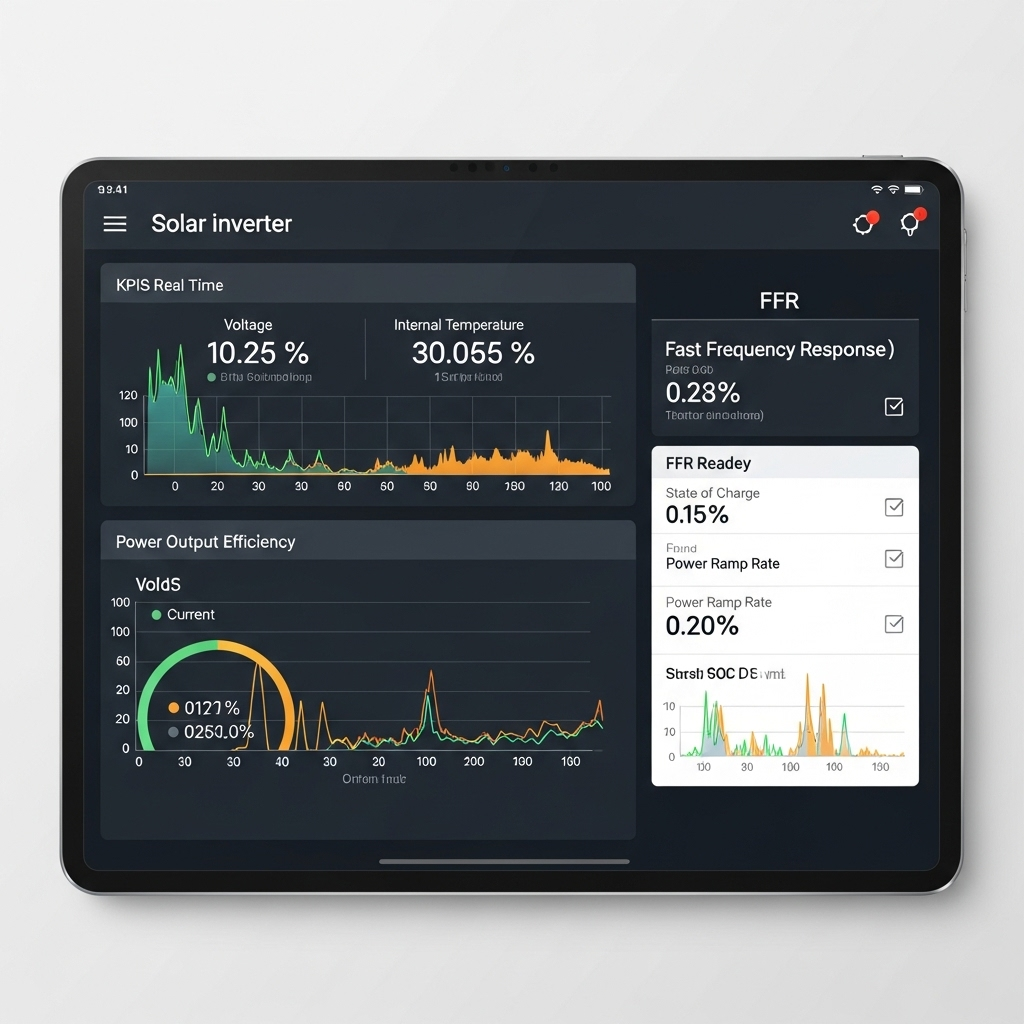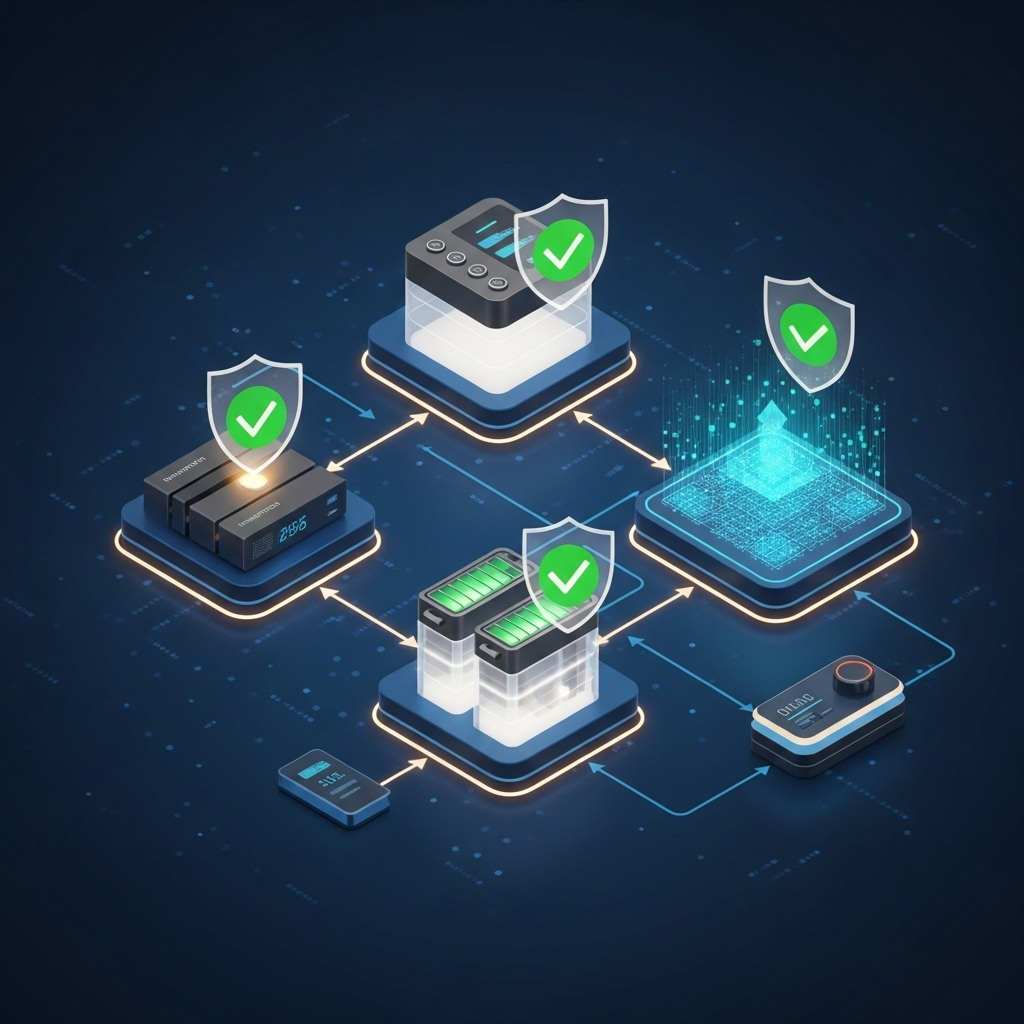In my work managing renewable energy assets, I've learned that a solar inverter is the brain and heart of the entire system. And to understand its health, you need more than a simple report on daily energy production. You need to listen to what it's telling you. That's where telemetry comes in. It's the continuous stream of data that gives us a direct window into the inverter's inner workings. By tracking the right Key Performance Indicators (KPIs), I can move from reacting to problems to preventing them entirely and ensure my assets are ready to support the grid with services like Fast Frequency Response (FFR).
Why I Rely on Granular Telemetry, Not Basic Reports
Think of basic monitoring as a yearly check-up, but telemetry as a 24/7 heart-rate monitor. Daily generation reports are useful, but they won't tell you that a cooling fan is starting to fail or that a capacitor is under stress—the kind of issues that precede a catastrophic failure. Granular, real-time data allows me to practice condition-based maintenance. For example, I've seen countless cases where a gradual rise in an IGBT's temperature, caught early via telemetry, pointed to a simple blocked air filter. A ten-minute fix prevented a multi-thousand-dollar component failure and days of downtime. That's the power of proactive management.

The Key KPIs I Monitor for Inverter Health
To get a true picture of an inverter's condition, I focus on a specific set of metrics that tell a complete story of its performance and stress levels.
Core Performance & Electrical Vitals
These are the fundamentals. If these numbers aren't stable, nothing else matters.
- Voltage and Current (DC & AC): The first thing I check is for clean, stable voltage. Erratic DC input can indicate an issue with the solar array itself, while unstable AC output might point to an internal problem or even a grid disturbance.
- Power Conversion Efficiency: Every inverter has a slight, predictable efficiency decay curve over its life. I track this curve closely. Any sudden or accelerated drop is a major red flag that tells me something is wrong internally.
- Internal Temperatures: Heat is the enemy of all electronics. I pay close attention to the temperature of critical components, especially the power stage (IGBTs) and capacitors, as they provide the clearest insight into operational stress.
| Component | Typical Operating Temperature Range | Warning Signs I Look For |
|---|---|---|
| IGBTs / Power Stage | 40°C - 85°C | Sustained temperatures above 90°C |
| Capacitors | 25°C - 70°C | Consistently high temperatures dramatically shorten lifespan |
| Control Board | 25°C - 60°C | Elevated temperatures can signal processing strain |
Component-Specific Health Indicators
This is where we get predictive. These KPIs help me spot wear and tear before it leads to a failure.
- Cooling Fan Speed (RPM): If an inverter is running hot but its fan RPMs are low, it's an immediate call to action. It means the fan is either obstructed or failing, and it's only a matter of time before overheating causes serious damage.
- DC Bus Capacitor Health: These capacitors are wear items, like tires on a car. Advanced inverters provide data on ripple voltage, which is a great early indicator that they're nearing their end-of-life and need to be scheduled for replacement.
- Insulation Resistance: This is a critical safety KPI. A drop in this value is a classic sign of moisture getting into the system or wire degradation. Catching this early prevents ground faults and serious safety hazards.
Getting Ready for the Future: Telemetry for Fast Frequency Response (FFR)
The role of inverters is changing. They are no longer just passive producers of power; they are active participants in stabilizing the grid. FFR is a perfect example of this.
What FFR Means in Practice
Think of the grid's frequency as its heartbeat, which must stay incredibly stable. When a large power plant trips offline, the frequency can drop dangerously fast. FFR is like the grid's reflexes, where battery-connected inverters inject power in under two seconds to stabilize it. As the International Renewable Energy Agency (IRENA) highlights in its Grid Codes for Renewable Powered Systems report, this rapid response is essential for a grid with high levels of renewables.
The KPIs for FFR Readiness
To be certified for FFR, an inverter and battery system must prove its reliability. These are the metrics grid operators demand:
- Battery State of Charge (SOC): You can't provide power if the tank is empty. We must constantly maintain enough SOC to respond to an under-frequency event.
- Response Time (Latency): This is non-negotiable. I measure the delay from command to response in milliseconds. Anything less than instant is a failure.
- Power Ramp Rate: How fast can the inverter go from zero to full power output? The system's telemetry must prove it can meet the strict ramp rates required by the grid service contract.
- Active Power Headroom: This is the real-time available capacity—both for charging and discharging—that can be called upon at a moment's notice.
This capability is often built into advanced **grid-forming inverters**, which can create their own voltage and frequency. They are so effective that, as the U.S. Department of Energy demonstrated in a renewable microgrid project, they can even restart a dead section of the grid (a "blackstart") on their own.
My Forward-Looking Approach to Inverter Management
Switching from basic monitoring to a strategy based on detailed telemetry has been a paradigm shift in how I manage solar assets. By focusing on the right KPIs for both long-term health and grid readiness, I can ensure my systems are not only reliable and long-lasting but are also valuable players in building a more resilient, renewable-powered grid. It's about using data to manage assets intelligently, ensuring they deliver value for decades to come.





Leave a comment
All comments are moderated before being published.
This site is protected by hCaptcha and the hCaptcha Privacy Policy and Terms of Service apply.